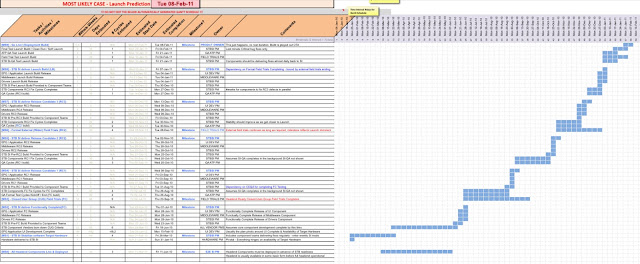In this post I will discuss the various types of Digital TV projects that I've come across over the last twelve (12) years. Although the DTV system is a complex one, and in theory, there are many different permutations and combinations of possible projects, we should not forget that on the part of the Pay TV Operator, it is quite an expensive affair, and therefore these guys are quite resistant to change. Initial costs in setting up the broadcast network must be made up in as short a time as possible (ROI in less than 5 years maybe), subscriber growth must be on the increasing trend, competitive threats kept at bay.
 Depending on the market dynamics, some PayTV operators (especially Europe & North America) have strong competition, the market is quite open and those regions usually have a strong regulatory body that promotes a free market, competitiveness and most important of all, the right of consumers to choose. Whilst in other markets such as Africa and Middle East, the PayTV operators that were first to get in when the time was right, are usually market leaders, the dominant player and lack any strong competition.
Depending on the market dynamics, some PayTV operators (especially Europe & North America) have strong competition, the market is quite open and those regions usually have a strong regulatory body that promotes a free market, competitiveness and most important of all, the right of consumers to choose. Whilst in other markets such as Africa and Middle East, the PayTV operators that were first to get in when the time was right, are usually market leaders, the dominant player and lack any strong competition.
Regulatory bodies in this region are either non-existent or immature in its abilities in governance and promoting a free market based on consumer choice (South Africa is a good example: not generally consumer driven, although recently this has seen a change with the introduction of the Consumer Protection Act but is still far from having an SA-equivalent of the UK's Ofcom for example ICASA doesn't come close). In the Asia/Pacific markets, there is a growing number of PayTV operators, where competition is rife, time-to-market more important over say, user experience or innovative features (I've seen this with my own eyes, for example - in India, there are some operators that have got products that look like they're built on eighties technology)...
 Depending on the market dynamics, some PayTV operators (especially Europe & North America) have strong competition, the market is quite open and those regions usually have a strong regulatory body that promotes a free market, competitiveness and most important of all, the right of consumers to choose. Whilst in other markets such as Africa and Middle East, the PayTV operators that were first to get in when the time was right, are usually market leaders, the dominant player and lack any strong competition.
Depending on the market dynamics, some PayTV operators (especially Europe & North America) have strong competition, the market is quite open and those regions usually have a strong regulatory body that promotes a free market, competitiveness and most important of all, the right of consumers to choose. Whilst in other markets such as Africa and Middle East, the PayTV operators that were first to get in when the time was right, are usually market leaders, the dominant player and lack any strong competition.Regulatory bodies in this region are either non-existent or immature in its abilities in governance and promoting a free market based on consumer choice (South Africa is a good example: not generally consumer driven, although recently this has seen a change with the introduction of the Consumer Protection Act but is still far from having an SA-equivalent of the UK's Ofcom for example ICASA doesn't come close). In the Asia/Pacific markets, there is a growing number of PayTV operators, where competition is rife, time-to-market more important over say, user experience or innovative features (I've seen this with my own eyes, for example - in India, there are some operators that have got products that look like they're built on eighties technology)...
I've set myself quite an ambitious task (as usual). The nature of DTV projects vary, depending on which side of the fence you're sitting on. Of course, all projects that generate revenue are driven by the PayTV operators themselves. If you're a software vendor, say Middleware or EPG Application, you will have a mix of customer delivery projects and internal R&D projects. Both projects have their own challenges, involve various factors that influence decision-making; and both can largely be estimated using general guidelines (that are usually based on performance of past projects).
In this post, I'll discuss projects from the PayTV Operator's point-of-view, in terms of typical use cases. In a future post I will touch on typical R&D projects and what drives primarily software vendors operating in the DTV product space.
Breakdown:
Breakdown:





